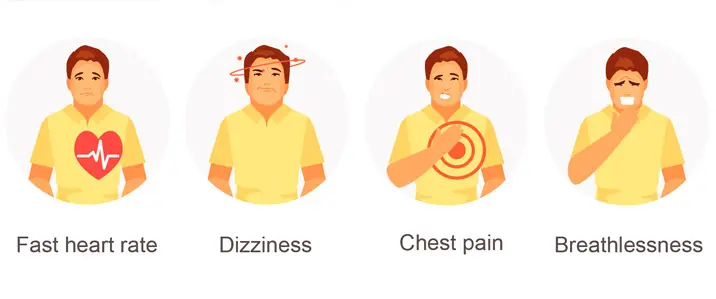Athletes and Heart Disease: Why Does it Happen?

Exercise is supposed to be good for you, yet even elite athletes are afflicted by heart disease. Dr Reginald Liew, cardiologist at the Mount Elizabeth Hospitals, shares more.
In 2021 at the Euro 2020 football championships, Danish soccer player Christian Eriksen suddenly collapsed on the pitch, leaving the entire stadium and those watching the match live, in shock. The then-29-year-old midfielder had fallen face-first into the turf, and everyone on the stadium and the world watched on as the medical staff raced against time to revive his heart. It was later announced that Eriksen had suffered a cardiac arrest.
It wasn’t the first time soccer fans had witnessed a young, super fit sportsperson being struck by health problems on the pitch.
In 2021, Sergio Aguero announced his early retirement – after suffering chest discomfort during a football game. He was sent to the hospital, where he was diagnosed with cardiac arrhythmia (irregular heartbeat).
In 2019, former Spain captain and goalkeeper Iker Casillas suffered a heart attack during training, and had to be rushed to the hospital.
While it's scary to imagine how the fittest among us can be stricken by heart disease, we delve deeper to understand just how it may happen to the very fit and active.
Athletes and heart disease: Genetics a common cause?

These athletes are extremely fit people, with expert teams taking care of their health (e.g. fitness, diet, lifestyle, medical care). But why are they, of all people, still stricken by heart disease?
“Some people, including professional athletes, may appear fit and well but yet have an underlying heart condition that predisposes them to sudden and dangerous heart rhythm conditions,” explains Dr Reginald Liew, cardiologist at Mount Elizabeth Hospitals.
“The problem may present for the first time and occur suddenly whilst engaging in sports,” he adds.
Some heart conditions that can impact such highly active individuals include:
Inherited arrhythmogenic diseases
Such issues are due to electrical abnormalities of the heart or ion channels, while the rest of the heart, including muscle and blood vessels (coronary arteries), are usually normal. Some common conditions include Long QT syndrome and Brugada syndrome.
Inherited heart muscle conditions
Conditions include hypertrophic cardiomyopathy and ARVC (arrhythmogenic right ventricular cardiomyopathy) due to abnormal heart muscle (usually due to a genetic mutation).
Myocarditis
This refers to acute infection or inflammation of the heart, which can weaken the muscle and cause a sudden collapse due to dangerous ventricular arrhythmias.
Coronary artery disease
Coronary artery disease refers to a condition where there is blockage of a heart blood vessel or sudden plaque rupture during an intense activity and lead to a heart attack.
Anomalous coronary arteries
This condition is due to abnormal variation of the coronary artery anatomy, which can give rise to sudden dangerous arrhythmias with exercise.
Heart valve problems
Heart valve problems include conditions such as aortic stenosis or mitral valve prolapse.
According to Dr Liew, the cardiac conditions mentioned above are just some of the ones giving rise to problems in athletes. However, these conditions are relatively rare compared with coronary artery disease, which is statistically more common in mature athletes or those with other cardiac risks such as high cholesterol, hypertension or diabetes.
Exercise and training – “Too much” of a good thing?
Apart from pre-existing medical conditions, can too much exercise within a short span lead to heart problems? Dr Liew doesn’t completely rule out this possibility.
This, according to Dr Liew, depends on the profile of the patient. For example, factors include one’s weight, exercise frequency, cardiac risk factors and other medical conditions.
“In general, I would say there is some truth in the statement as too much sudden exercise without adequate training, and building up of the body’s capabilities, can lead to problems in some people,” he explains, advising individuals to train progressively to build up one’s exercise capacity.
Too much exercise within a short time can cause one’s blood pressure or heart rate to go too fast. If someone has underlying coronary artery disease, blood pressure issues, or weakened heart muscles, this can increase the risk of a sudden heart attack or stroke, or trigger the development of an arrhythmia.
On the topic of training too much, or too intensely, Dr Liew recognises that training for endurance sports such as marathons and triathlons can cause excessive heart strain and increase the heart’s size. Over time, this can increase one’s risk of getting cardiac arrhythmias (irregular heartbeat).
Symptoms and prevention: What can be done to prevent life-threatening incidents?

Dr Liew advises individuals to be vigilant about symptoms. Seek immediate medical attention should any symptoms be noticed.
He points out the signs of heart diseases to look out for:
- Excessively fast heart rates when exercising (faster than usual for the degree of exercise) or heart rates that remain fast even during recovery
- Dizziness, light-headedness, or loss of consciousness
- Chest pain with exertion, which may be due to abnormally thickened heart muscle or coronary artery disease
- Excessive breathlessness with exercise
"I would also recommend athletes and workout enthusiasts to have a medical check-up – including a physical examination and ECG (electro cardiogram) – prior to participating in heavy exercise, especially if they have any symptoms or cardiac risk factors,” he adds.
Depending on the results and the profile of the patient, one, or a few types of screening for heart disease, may be recommended:
- Echocardiogram
To assess heart muscle function, valves and heart chamber sizes - Exercise treadmill test
To look for heart rhythm problems during exercise and coronary artery disease - CT scan of the heart
To look for anomalous coronary arteries and assess for blockage in blood vessels
The frequency of such checks depends on the age and profile of the patient. Dr Liew recommends an annual cardiac check-up for individuals above the age of 50.
For endurance sports and marathon enthusiasts, Dr Liew suggests undergoing a cardiopulmonary exercise test. This specialised exercise test assesses the cardiovascular and respiratory response simultaneously with exercise.
“The results allow the doctor to determine the level of fitness of the individual and what their anaerobic threshold is. Over time and with more training, this number can be improved and compared with prior tests,” he explains.
Stay healthy, stay safe
Being active has its benefits to health.
However, taking care of your body is just as important. Heart conditions, when left alone, can often pose dangerous risks. If you are someone who’s actively into sports or thinking about taking on a new intensive sport, do consider speaking to your doctor and even undergoing a heart screening to assess your health and physical condition for the activity.
You can find out more, or make an appointment to speak with a cardiologist.
Stay safe, and happy exercising!

